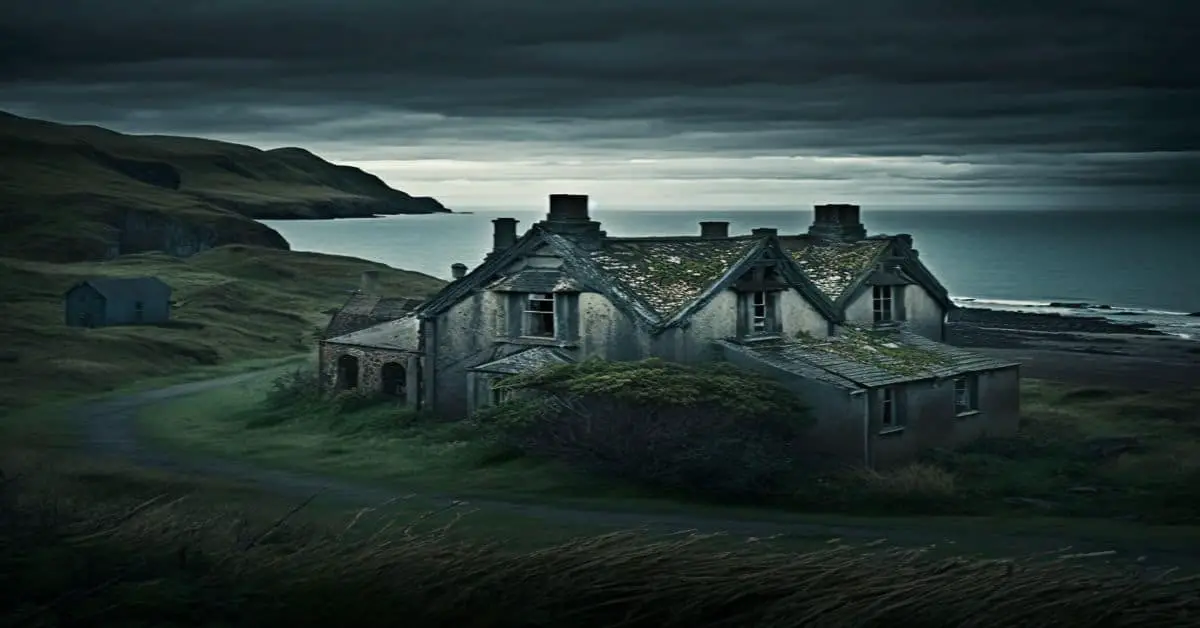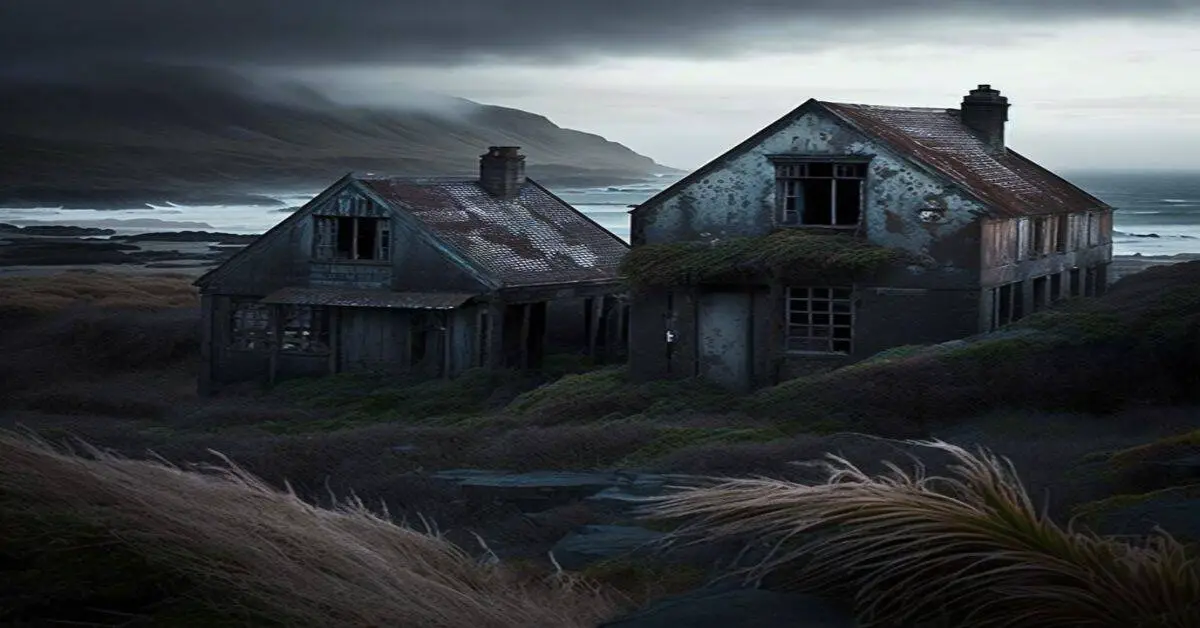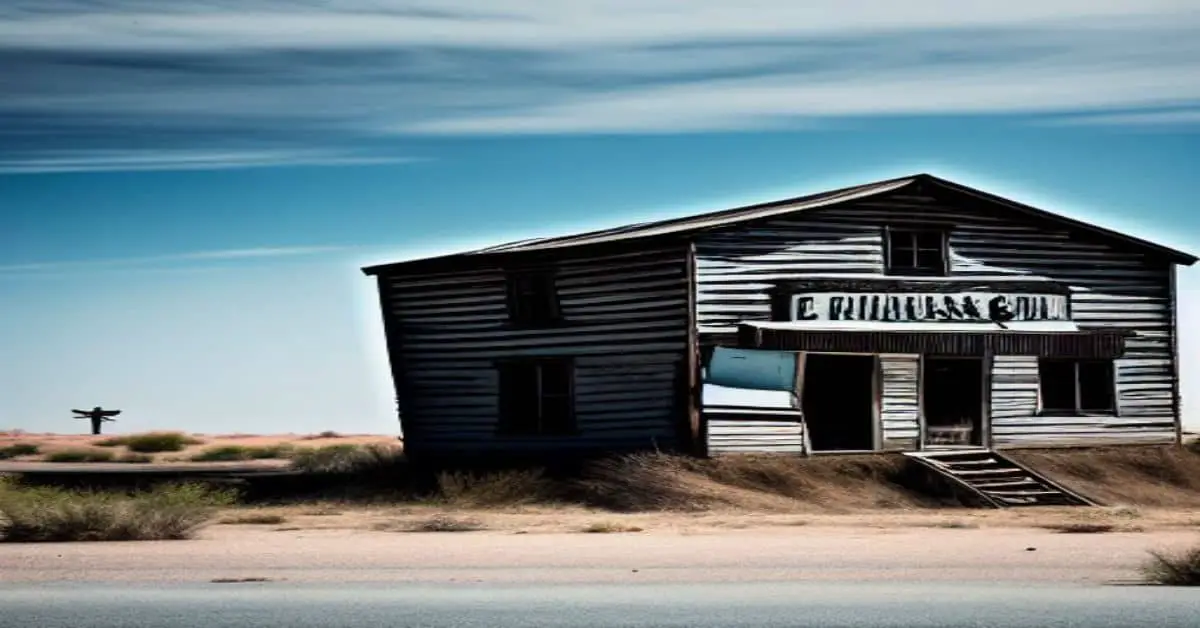Nestled amidst the rolling hills and verdant forests of Donnelly, Idaho, lies the hauntingly beautiful Roseberry ghost town.
This once-bustling community, established in the late 19th century by Finnish immigrants who fled the oppressive Russian empire, is a testament to the resilience and determination of early settlers.
Despite being abandoned for decades, Roseberry remains a living relic of Idaho’s rich history, evoking a sense of nostalgia and wonder in all those who visit.
With its eight buildings, including a general store and school/church, Roseberry is a testament to the Finnish settlers’ persistence and resourcefulness.
Despite the ravages of time, the ghost town still exudes a unique charm, showcasing the beauty of Idaho’s past.
Today, Roseberry is a source of local pride and a popular tourist attraction, drawing visitors from around the world to explore its fascinating history and experience the unique culture of this Finnish settlement.
Key Takeaways
- Roseberry is a historically significant ghost town established in the late 19th century by Finnish immigrants.
- The town boasts eight standing buildings, including a general store and school/church, many of which are listed on the National Register of Historic Places.
- The Roseberry Foundation is a non-profit organization dedicated to the preservation and restoration of the town’s historic buildings, with ongoing restoration progress and community involvement.
- Roseberry is a popular tourist attraction in the summer, drawing visitors from around the world and offering a glimpse into the past and the natural beauty and local culture of Idaho.
Location and History
Roseberry, a former Finnish settlement in Donnelly, Idaho, is a historically significant ghost town boasting eight standing buildings and is a source of local pride and tourist attraction.
The town was established in the late 19th century by Finnish immigrants fleeing the oppressive Russian empire. These settlers were drawn to the area due to its fertile soil and timber resources, and they quickly established a thriving community centered around farming and logging.
The settlement story of Roseberry is a testament to the resilience and determination of its early settlers. Despite facing numerous challenges, including harsh winters and a lack of resources, the Finnish immigrants built a thriving community for several decades.
The town’s historical significance to Idaho is further emphasized because many of its buildings have been carefully preserved and are now listed on the National Register of Historic Places.
Today, Roseberry serves as a reminder of the struggles and triumphs of Idaho’s early settlers, and it continues to attract visitors from all over the world interested in learning more about the state’s rich history.
Current State and Preservation Efforts
The preservation efforts for the remaining eight buildings of this Finnish settlement demonstrate a dedication to maintaining a piece of Idaho’s history and culture that is both impressive and inspiring. These buildings are a testament to the hard work and determination of the local community who have taken on the task of restoring the structures to their former glory.
The restoration progress of the Roseberry ghost town is ongoing, with the community actively preserving the buildings and ensuring their continued existence for future generations to appreciate. The community has banded together to establish the Roseberry Foundation, a non-profit organization dedicated to the preservation and restoration of the town’s historic buildings.
Restoration efforts have included repairing and replacing the roofs, windows, and doors of the buildings, as well as restoring the interiors to their original state. The general store and school/church are two of the most well-preserved buildings, with the former now functioning as a museum and gift shop.
The community is actively seeking to bring back more buildings to the site, with some already being moved from other towns to be a part of the Roseberry collection. Overall, the restoration progress and community involvement in preserving the Roseberry ghost town is a testament to the importance of local history and culture, and serves as an inspiration for others to take on similar preservation efforts.
Visiting Roseberry Today
One can visit the remaining structures of a Finnish settlement in Valley County undergoing restoration efforts to preserve its historical significance. Roseberry, Idaho, a ghost town that used to be a bustling community in the late 19th century, is now a popular tourist attraction in the summer.
Visitors can see eight buildings still standing today, including the general store and school/church. These structures serve as a reminder of the town’s past and contribute to the local pride of the community.
Aside from visiting the historic buildings, there are also local activities and nearby attractions that visitors can explore. The Roseberry General Store still offers souvenirs, snacks, and drinks. Horseback riding is also available nearby, which provides a unique way to experience the beautiful scenery of the surrounding area.
Furthermore, the McCall Winter Carnival, an annual event that features ice sculptures, live music, and other fun activities, is just a short drive away from Roseberry.
Overall, a visit to Roseberry offers a glimpse into the past and a chance to experience the natural beauty and local culture of Idaho.
Frequently Asked Questions
What led to the decline of Roseberry as a settlement, and when did it become a ghost town?
Roseberry declined due to the depletion of natural resources, the arrival of the railroad, and the Great Depression. As a result, most residents left, impacting the surrounding area. It became a ghost town in the 1950s.
Are there any plans to restore the buildings currently in disrepair, and if so, what is the timeline for these efforts?
The plans for restoration of the buildings in disrepair at Roseberry Ghost Town are underway, with funding sources from government grants and private donations. The timeline for these efforts is dependent on available resources and volunteer efforts.
What was life like for the Finnish settlers who founded Roseberry, and what challenges did they face in the early years of the settlement?
The Finnish settlers who founded Roseberry faced challenges in adapting to the new environment while maintaining their traditions. They relied on agriculture and logging for economic activities, and the community thrived until the 1920s when the town began to decline.
Are there any legends or ghost stories associated with Roseberry, and have there been any reported paranormal experiences in the town?
Legends and ghost stories have emerged surrounding Roseberry, but there is no credible evidence of paranormal experiences in the town. Its historical significance and preservation as a tourist attraction continue to draw visitors.
How has the local community responded to efforts to preserve Roseberry, and what role have they played in these efforts?
Community involvement has played a crucial role in preservation efforts at Roseberry. Locals have taken pride in restoring the remaining buildings of this historic Finnish settlement, making it a significant tourist attraction and source of local pride.


